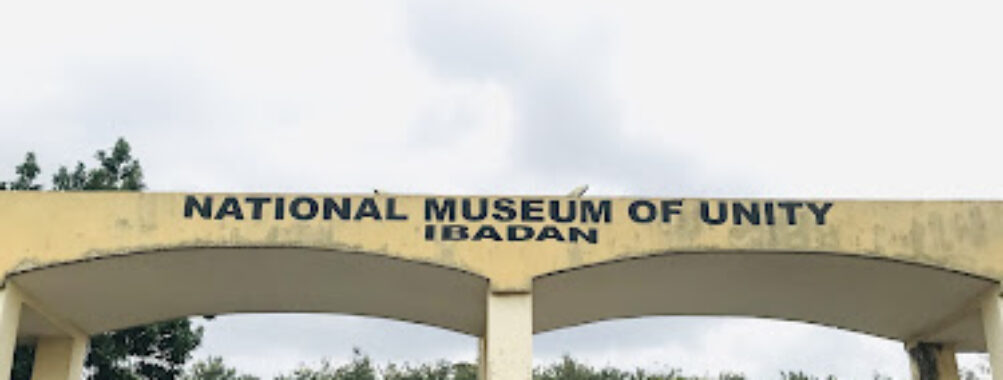
National Museum of Unity
Table of Contents
Description
The National Museum of Unity in Ibadan is a thoughtful, layered presentation of Nigerian history and culture that aims to bridge regional stories into a single public forum. Designed as a national museum rather than a boutique gallery, it places emphasis on artifacts and ethnographic displays that trace the many strands of Nigeria’s past — from ancient pottery and ritual objects to more recent works that reflect social change. The location in Oyo State anchors the collection in Yoruba heartland traditions, but the curatorial scope reaches across ethnic groups and historical periods, making the museum an important stop for anyone studying Nigerian heritage or simply curious about how the country’s many histories fit together.
Architecturally the building is straightforward and approachable. Galleries are arranged to move visitors from broad contextual introductions into more focused rooms where collections of objects — masks, textiles, metalwork, carved figures and ceremonial paraphernalia — are grouped by theme. The ethnographic displays stand out: they provide context for everyday customs, religious practices, and material culture. Exhibitions frequently include interpretive labels and photographs; where interpretation is sparser, docents and staff fill in gaps, offering local knowledge and lively anecdotes that bring objects to life.
The museum’s artifacts are its core strength. Several galleries feature ancient and traditional objects whose provenance speaks to long histories of craftsmanship and cultural exchange across the region. Pottery galleries illustrate both functional and ceremonial ceramics, and there is a notably strong collection of carved wooden sculptures and ritual items. These objects are not only aesthetic; they are teaching tools. Students, researchers, and family groups often gather in the same rooms, and that mix produces a warm, lived-in atmosphere that some larger institutions lack.
Visitors who come with an eye for detail will appreciate the layered storytelling. Small labels often reveal surprising connections between objects and everyday life — how a type of beadwork ties to marriage practices, or how a particular carving technique links to a regional guild. At the same time, the museum makes space for rotating exhibitions and temporary displays that highlight contemporary artists and recent archaeological discoveries. That means repeat visitors find fresh content on return visits; the place is not entirely static.
Accessibility and amenities are handled better than many comparable sites. Wheelchair-accessible entrances and parking ease arrival for visitors with mobility needs, and accessible restrooms are available on site. A modest restaurant and public restrooms provide practical comfort during a longer visit. Families with children tend to find the museum friendly: exhibits are labeled clearly, and the layout allows for short, manageable loops so parents can pace younger visitors.
On the flip side, the museum’s interpretation can feel uneven. Some galleries are brilliantly contextualized with timelines and multilingual labels, while others leave more to the imagination. Lighting and conservation work appear to be in progress in certain rooms, which occasionally affects how objects are displayed. Those nuances do not diminish the importance of the collections, but they do mean that visitors who crave polished, high-tech museum theatre might feel the experience is more intimate and less showroom-like. In other words, this is the kind of place where a curious mind and a few questions will be rewarded.
The staff and guides deserve special mention. Many of the people who work here know the collection at a granular level and enjoy sharing stories behind objects. They often connect artifacts to local oral histories and cultural practices in ways that are both informative and charming. That human element often turns a routine museum stroll into a memorable learning moment; a casual remark about a carved mask or a ceremonial staff can illuminate centuries of history in a sentence or two.
For research and education, the National Museum of Unity carries clear weight. Scholars visit for the ethnographic collections and archival materials; schools bring students for structured tours that mesh well with curriculum on Nigerian history and cultural heritage. The museum also functions as a public forum on identity and unity: exhibitions and programs are sometimes organized around themes that encourage dialogue on how diverse traditions contribute to national identity.
In short, the National Museum of Unity in Ibadan is best understood as an earnest, educational institution where artifacts do the talking. It is not a glossy, blockbuster museum — and that is part of its appeal. The displays invite slow looking, curiosity, and questions. Visitors interested in Nigerian history, traditional art, and the craft of storytelling through objects will find it rewarding, and those willing to engage with staff and guides will leave with richer insights than the labels alone provide.
Location
Places to Stay Near National Museum of Unity
Find and Book a Tour
Explore More Travel Guides
No reviews found! Be the first to review!